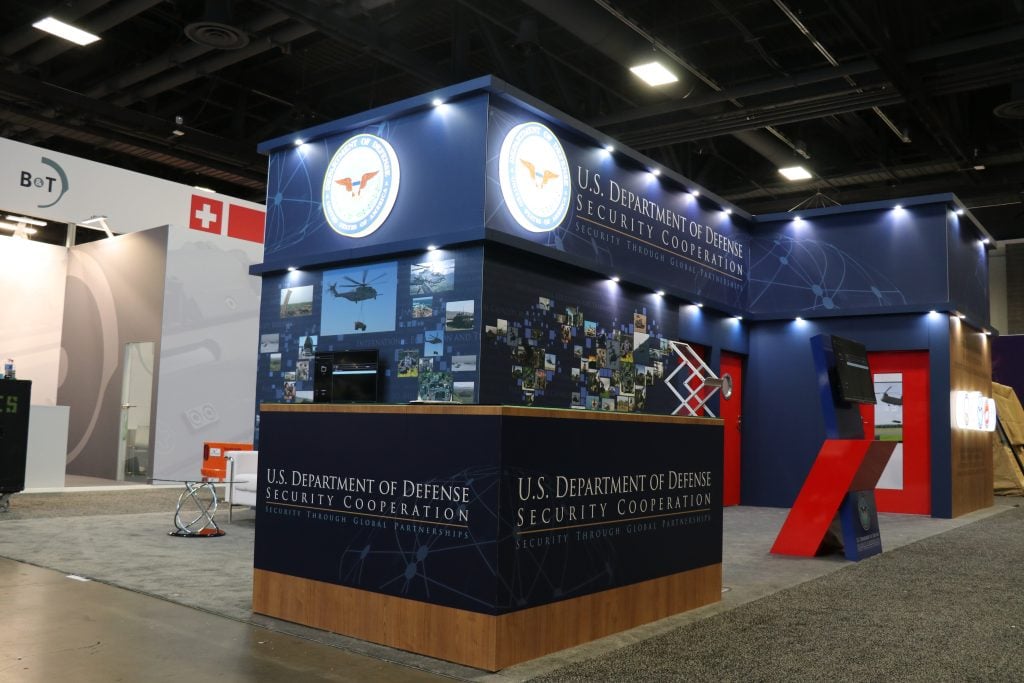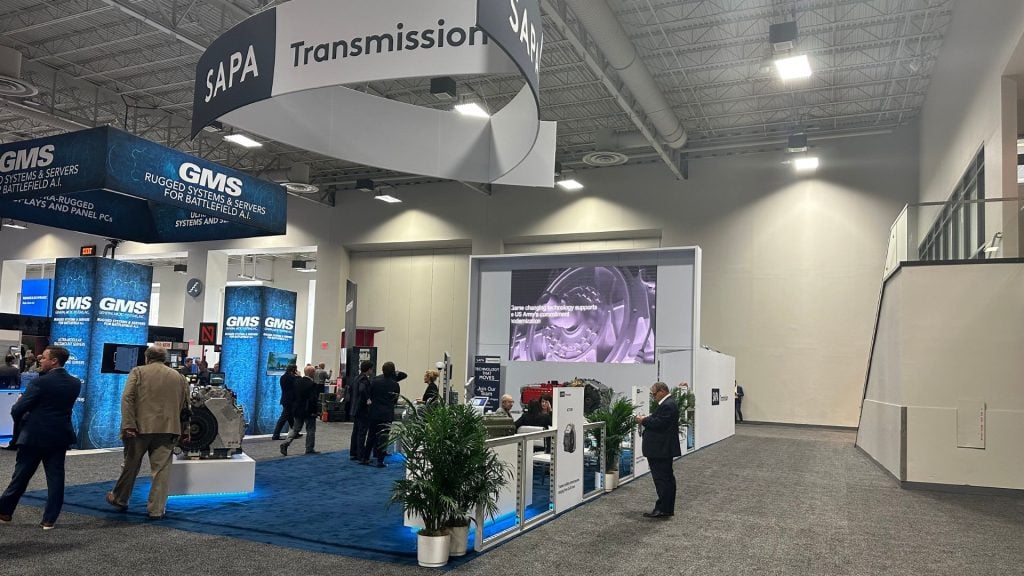
Introduction
Trade shows are crucial events for businesses looking to showcase their products and services, connect with potential clients, and grow their brand presence. However, in a crowded marketplace, standing out can be a challenge. In recent years, a transformative technology has started to make waves in the trade show industry: Augmented Reality (AR).
AR provides an immersive, interactive experience that allows businesses to engage attendees in ways that traditional booths simply can’t. By integrating AR into their exhibits, brands can create memorable and unique experiences that not only attract visitors but also leave a lasting impact. In this blog, we will explore how AR is revolutionizing trade show exhibits and why businesses should consider incorporating this technology into their trade show strategy.
1. What is Augmented Reality?
Before diving into its impact on trade shows, it’s important to define what augmented reality is. AR is a technology that overlays digital content—such as images, videos, and 3D models—onto the real world. This is typically achieved using smartphones, tablets, or AR glasses. Unlike Virtual Reality (VR), which creates a completely immersive digital environment, AR enhances the physical world by adding virtual elements to it in real-time.
At trade shows, AR can be used to enhance the visitor experience by providing interactive content that brings products or services to life. From 3D product models to virtual demonstrations, AR enables attendees to engage with brands in a way that is both entertaining and informative.
2. Enhancing Product Demonstrations with AR
One of the most powerful ways AR is transforming trade show booths is through enhanced product demonstrations. Instead of relying on static product displays or videos, AR allows exhibitors to showcase their products in a fully interactive, dynamic way.
For example, a company that manufactures machinery or complex products can use AR to create 3D models of their products, which attendees can view and interact with through their smartphones or AR glasses. These models can be rotated, zoomed in on, or even disassembled to showcase their inner workings. This type of interactivity allows potential customers to better understand the product’s features and benefits, leading to more informed decision-making.
For industries like automotive, healthcare, and architecture, AR offers an invaluable opportunity to present complex products or designs in a way that’s easy to understand and visually engaging.
3. Creating Immersive Brand Experiences
AR isn’t just about showcasing products—it’s about creating an immersive experience that fully engages visitors and connects them to the brand. Many businesses are using AR to design entire experiences that transport attendees into a virtual world that highlights the brand’s identity.
For example, a fashion brand might use AR to allow attendees to try on clothes virtually, using their own image as a canvas. Similarly, a tourism company could create virtual travel experiences, allowing attendees to explore destinations through AR simulations.
These immersive experiences create memorable moments that resonate with attendees long after the event is over. By offering something unique and innovative, brands can leave a lasting impression and stand out in the minds of potential customers.
4. Interactive Displays and Gamification
Another way AR is transforming trade show exhibits is through interactive displays and gamification. Trade show booths can be equipped with AR-powered games or challenges that encourage attendees to participate and engage with the brand in a fun and rewarding way.
For instance, a brand could set up an AR scavenger hunt where attendees use their smartphones to find hidden virtual objects or clues throughout the booth. Participants could win prizes or discounts by completing the challenge, which adds an element of excitement and encourages deeper interaction with the brand.
Gamification not only makes the booth more engaging, but it also creates an incentive for attendees to stay longer, explore more, and learn more about the products or services being offered.
5. Virtual Try-Ons and Customization Options
Augmented reality is also enabling virtual try-ons and customization features, which are especially useful for industries like fashion, beauty, and retail. For example, attendees can use AR to try on clothing, makeup, or accessories virtually, without having to physically try them on.
This functionality enhances the customer experience by giving them the ability to see how a product will look on them before making a purchase. It also allows businesses to showcase a wider range of products, since attendees can “try on” items that may not physically be available at the booth.
In addition, some brands are using AR to offer customization options. For example, a shoe brand could allow attendees to design their own shoes by selecting colors, patterns, and materials in real-time through an AR interface. This level of personalization gives customers a sense of ownership over the product, which can drive greater engagement and brand loyalty.
6. Real-Time Data and Analytics
Another advantage of using AR at trade shows is the ability to gather real-time data and insights. With AR technology, exhibitors can track how attendees interact with various elements of the booth, such as product demonstrations, virtual try-ons, or gamified experiences. This data can provide valuable insights into customer preferences, interests, and behaviors.
For example, if an exhibitor notices that a particular product demo is attracting more attention, they can adjust their booth layout or presentation to capitalize on this interest. Alternatively, they may use the data to tailor follow-up communications, offering personalized recommendations based on the attendee’s interactions with the booth.
By collecting and analyzing real-time data, businesses can refine their trade show strategies on the spot, making their efforts more effective and ensuring they’re connecting with the right audience.
7. The Future of AR in Trade Shows
As AR technology continues to evolve, its potential in the trade show industry is virtually limitless. In the future, we can expect even more advanced and immersive AR experiences, such as holograms, 3D projections, and fully interactive environments.
Additionally, as AR devices become more affordable and accessible, exhibitors will be able to create even more sophisticated and engaging experiences without the need for specialized equipment. For instance, attendees may use their own smartphones or wearables to interact with AR elements at trade shows, making the technology more accessible to both exhibitors and visitors.
The integration of AR with other technologies like AI and IoT could further enhance the trade show experience. For example, AI-powered AR could provide personalized recommendations based on an attendee’s preferences or browsing history, further improving engagement and conversion rates.
8. Conclusion: Embrace AR to Stay Ahead of the Competition
As the trade show industry becomes more competitive, businesses are continually looking for new ways to stand out and connect with potential clients. Augmented Reality provides an exciting opportunity to enhance the trade show experience by offering interactive, engaging, and memorable experiences that attract attention and leave a lasting impression.
By incorporating AR into their trade show exhibits, businesses can differentiate themselves from competitors, build stronger connections with attendees, and create a truly immersive brand experience. As technology continues to evolve, AR will only become more integrated into the trade show landscape, offering even more opportunities for innovation and engagement.
For businesses looking to stay ahead of the curve, now is the time to explore the potential of augmented reality and make it a key component of their trade show strategy.


 Global
Global Europe
Europe

